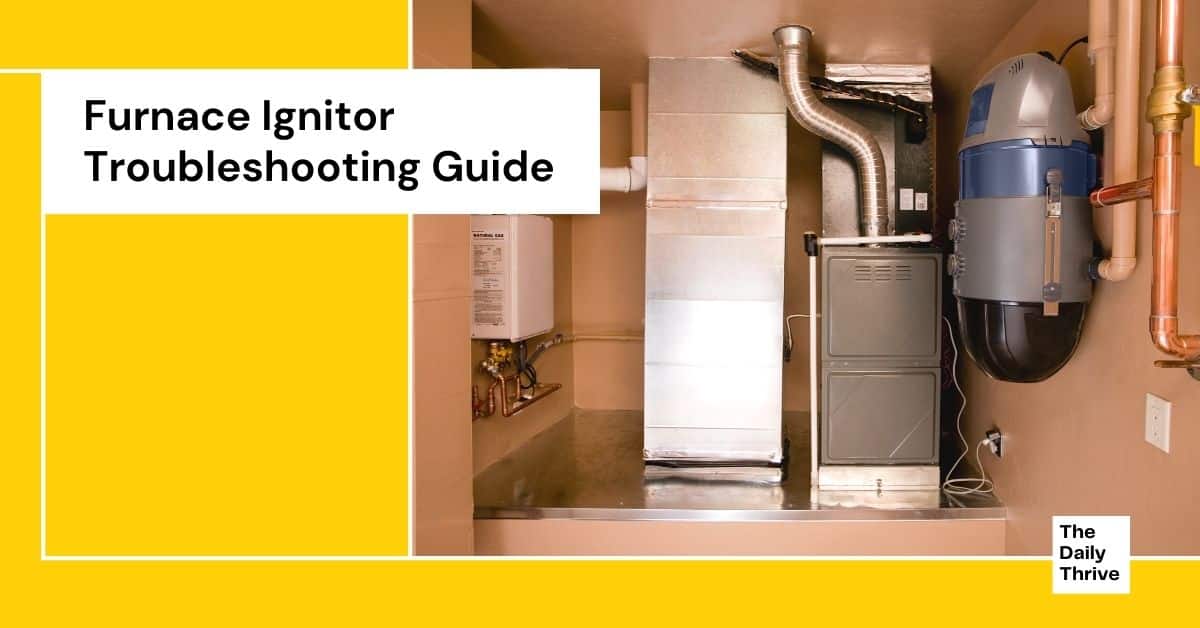If you are having problems with your furnace, one of the most common causes is a faulty ignitor. Being able to tell if furnace ignitor is bad is very easy, and replacing it is just as simple. In this article, we will guide you to troubleshoot furnace ignitor and determine if it needs to be replaced.
To identifying if your furnace ignitor is bad, the first thing is understand what exactly a furnace ignitor is. The functionality of the ignitor on your furnace, is to quickly ignite the gas that’s use for heat. This small part creates electrical energy to start off the process of combustion.
Types of Furnace Ignitor and How They Work
Older furnace systems have a standing pilot light that continues ignited while the furnace is on. In such furnaces, the built-in pilot operates together with the thermocouple to control the gas. The problem with pilot lights is that they are ineffective, and also waste a lot of energy as they’re continuously burning the gas. If you still have a furnace with a standing pilot light, you may want to consider replacing it with a newer and high-efficiency gas furnace model.
Newer furnace models have now started use an electronic ignition systems rather than a standing pilot light because it’s more reliable. An electronic ignition systems only comes on when needed and it only on for less than a minute each time. Depending on the model, they may use an intermittent pilot system or a hot surface ignition system.
This how the electronic furnace ignitor work: the furnace’s control board provides electrical energy to the ignitor to heat up. When the ignitor is glowing bright with the heat, the gas is turned on. The gas is ignited by the heat of the ignitor. After the flame sensor detects heat, the furnace control turns the power off to the ignitor.
How To Tell If Furnace Ignitor Is Bad
If you want to troubleshoot the furnace ignitor problem yourself, first thing you need to understand that this kind of task can be dangerous. It’s important to proceed with caution and be careful of what you’re doing.
Diagnosing a faulty ignitor is quite simple, here’s how to tell if your furnace ignitor is bad:
If the furnace ignitor does not heat up or glow bright orange, inspect your ignitor closely for cracks. This part tends to crack and wear out, because it heats up and cools off so often. The crack is usually easy to spot.
The other way to diagnosing a faulty ignitor is test it with a multimeter. You need to unplug the ignitor and take an ohm meter reading to see if the ignitor is bad.
Turn your multimeter to the ohms setting so it can properly measure a resistance of 10 to 200 ohms. A good furnace ignitor will have a resistance of 40 to 90 ohms, higher than that indicates a faulty ignitor. If the multimeter stays at zero, the ignitor is dead and must be replaced.
Furnace ignitor wasn’t made to last long, over the time it will start to break. Hot furnace igniter will last about 10 to 15 years. If the life-span has been exceeded, then you should consider replacing it.
You will need to call out a qualified HVAC technician for furnace ignitor replacement. This is important as an expert technician can determine which size the ignitor and do the job safely. If the wrong size ignitor is used, the voltage won’t be correct, and it will just end up failing the whole system.
Although troubleshooting and replacing furnace ignitor are things you can do on your own, there might be times when the issue requires attention from a professional HVAC technician. Also remember while attempting DIY can be satisfying and cost effective, it’s important to be sure that you have the skills!






